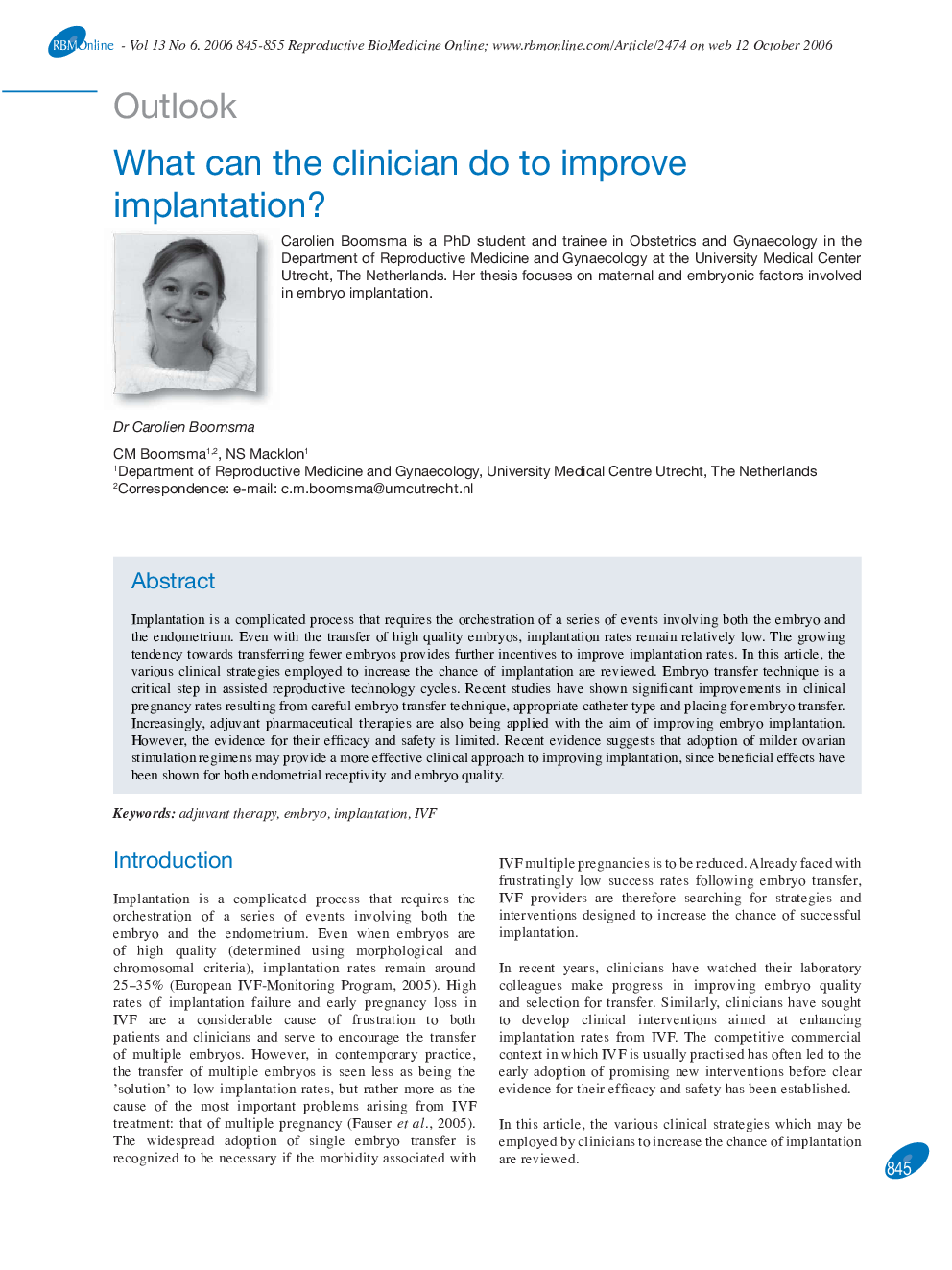| Article ID | Journal | Published Year | Pages | File Type |
|---|---|---|---|---|
| 3973400 | Reproductive BioMedicine Online | 2006 | 11 Pages |
Implantation is a complicated process that requires the orchestration of a series of events involving both the embryo and the endometrium. Even with the transfer of high quality embryos, implantation rates remain relatively low. The growing tendency towards transferring fewer embryos provides further incentives to improve implantation rates. In this article, the various clinical strategies employed to increase the chance of implantation are reviewed. Embryo transfer technique is a critical step in assisted reproductive technology cycles. Recent studies have shown significant improvements in clinical pregnancy rates resulting from careful embryo transfer technique, appropriate catheter type and placing for embryo transfer. Increasingly, adjuvant pharmaceutical therapies are also being applied with the aim of improving embryo implantation. However, the evidence for their efficacy and safety is limited. Recent evidence suggests that adoption of milder ovarian stimulation regimens may provide a more effective clinical approach to improving implantation, since beneficial effects have been shown for both endometrial receptivity and embryo quality.
